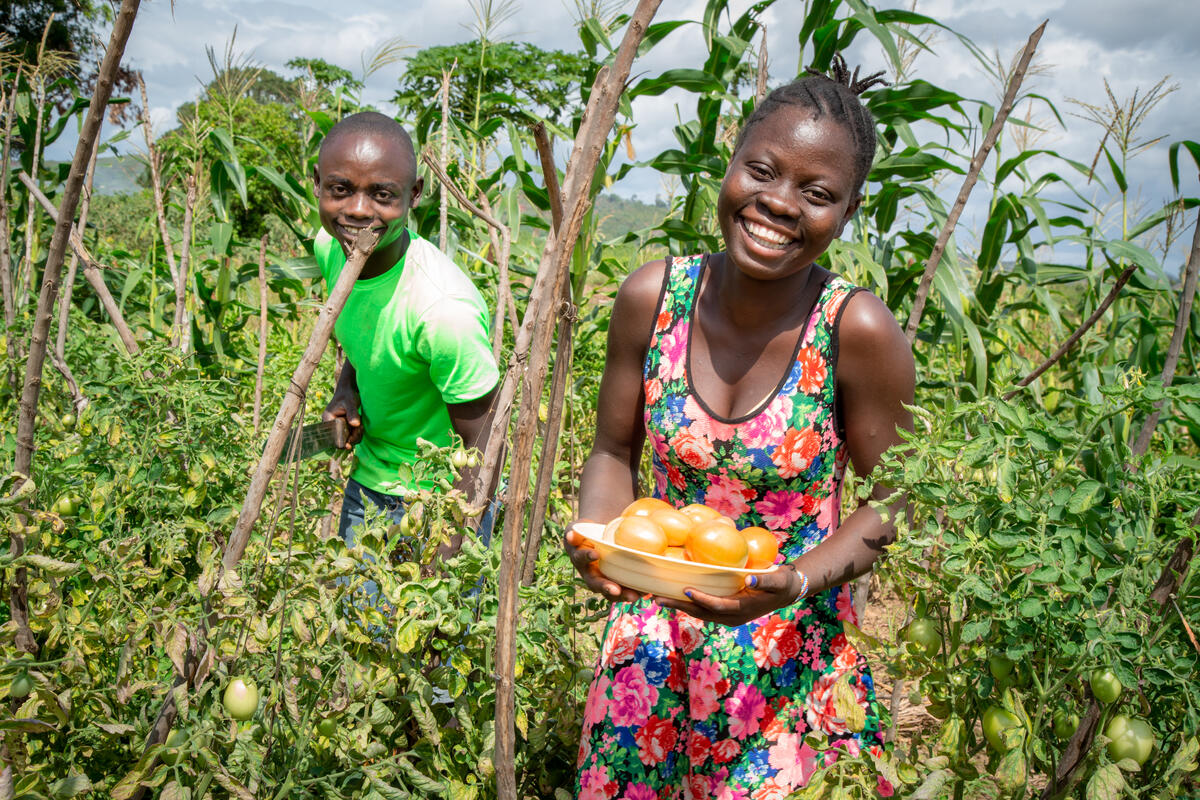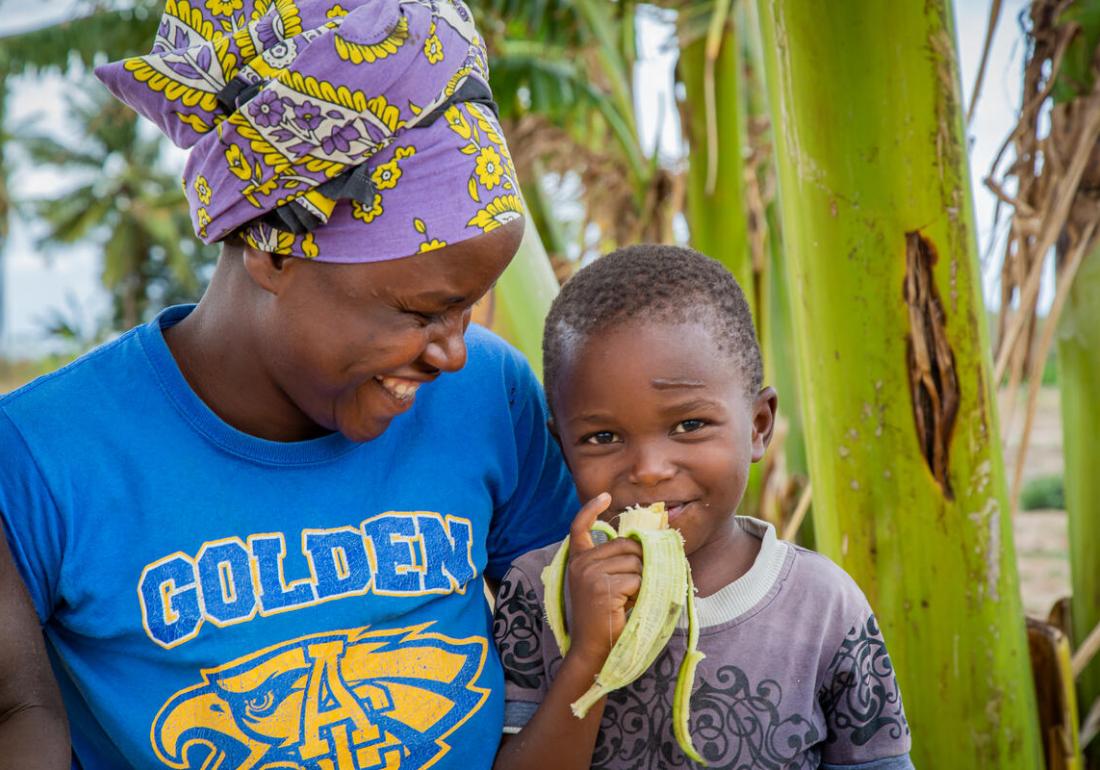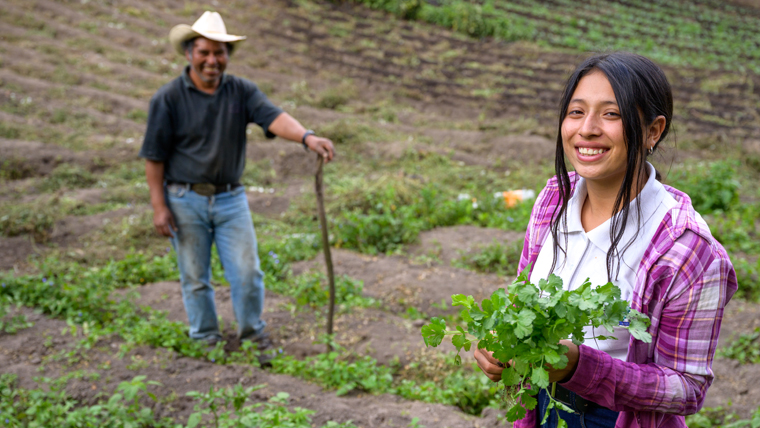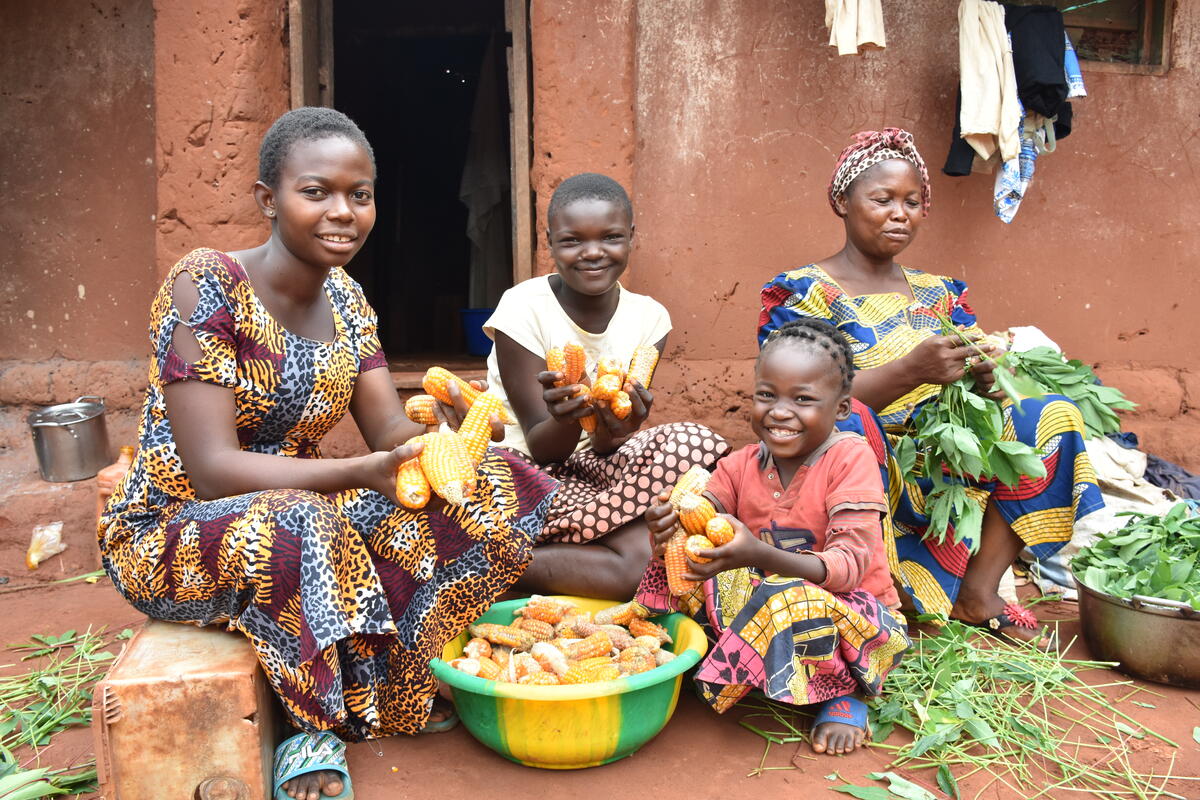
Can sponsorship really help stop extreme hunger?
Child Sponsorship is an opportunity to personally connect with a child, family, and community in need. But what does this mean when fighting a global hunger crisis which has 41 million people on the brink of famine? Can sponsorship really make a difference in a crisis that’s already so vast and overwhelming?
It’s an important question!
Extreme hunger creates a cycle that people can’t escape from. It causes people to be less productive and more prone to disease, which in turn can make it harder to improve their livelihoods or earn a better income. Sponsorship can break that cycle by empowering communities to create lasting change.
Sponsorship is a hand up, not a hand out
When crisis or conflict disrupts people’s ability to grow food, earn livelihoods or go to markets, we deliver emergency food relief, which is critical to ensuring people survive. As the biggest distributing partner of the World Food Programme, World Vision reached more than 10 million people with lifesaving food aid in 2020.
Sponsorship multiplies the benefits of this emergency relief by empowering people to break free from poverty, for good. When you sponsor a child, you don’t just provide life-saving food for today, but tools for a more resilient, hunger-free future. Sponsorship works alongside a community over longer periods of time - usually around 15 years - to equip communities to tackle the root causes of poverty so they have the knowledge, skills and resources they need to handle future challenges, whether from food shortages or other threats. Every community is different, so sponsorship works with the community to develop local solutions to their biggest challenges and put them into action. That can include interventions like climate-smart agricultural skills development or financial literacy training, which not only combat food crises in the present but set the community up to thrive in years to come.

Take Mayra, for example. Looking back on the pandemic, the single mum of four in Bolivia, doesn’t know where she would be without sponsorship. Three years ago she joined a savings group that sponsorship helped establish; she bought a hen to lay eggs. She had always sold the eggs to supplement her income but hadn’t done anything more with it… until the pandemic claimed her job. Then she was forced to rely on her egg business as a way to keep her children out of the grips of hunger. From the sale of eggs, she bought corn and beans and planted a garden. The income generated from her vegetables enabled to buy a few more chickens. She kept expanding her business and eventually was able to rely on the income it generated without looking for another job. Not only did she keep her children from going to bed hungry, but she contributed to the community by keeping growing food insecurity at bay.
Sponsorship is a community-focused model
Decades of experience has proven the most effective way to change the life of a child is to change the community where they live. This is true for solving hunger too!
Sponsorship has the double benefit of being both long-term and flexible, which means we can work continually with communities to identify their most pressing needs and provide the assistance that children need most. We do this by pooling your monthly sponsorship donation with those of other sponsors in the community.
When a food crisis strikes, we are able to act immediately to meet the needs of the entire community, even if it means shifting gears from our initial programming. Staying in communities for the long-haul means we can continue to mold and adapt our programming to the development of the community.

In India, when a deadly second wave of COVID-19 engulfed the country, the communities where sponsorship was already working benefitted immediately from pandemic relief. For nine-year-old Ashmitha, whose father was suddenly claimed by COVID-19, that meant her family could receive food parcels, psychosocial care and livelihoods support to help them through their darkest hours.
Sponsorship has a multiplying effect
The global hunger crisis is growing at an alarming rate. The amount of children on the brink of starvation has doubled since 2019. Sponsoring a child, or any action, can feel insignificant in light of a crisis that is so large—but it’s not!
There is more than just one way we can make a difference against global poverty. Sponsorship is just one solution, but it’s a pretty powerful one. Because of World Vision’s community-focused solutions, when you sponsor a child, four more benefit too. That means the impact you make when you help one child will keep growing exponentially.

In Marafa, Kenya, we’re seeing this impact firsthand. Marafa is one of the country’s most arid areas, which puts it at the forefront of facing famine-levels of hunger. But it’s here that sponsorship funding supports farmers’ groups with almost 400 members whose farms are flourishing against the drought-gripped landscape that surround them. Thanks to climate-change resilient irrigation interventions and savings groups, members can celebrate a bumper harvest, not just this year but for years to come.




